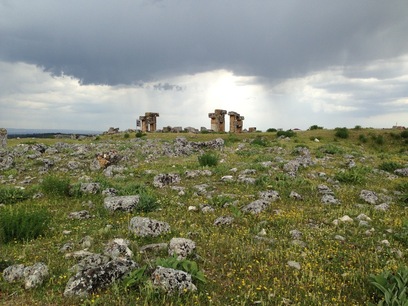As archaeological sites go, ancient Blaundos is largely forgotten. It may be only 30km south of Uşak but not even the taxi drivers seem to have heard of it even though it is clearly signposted from town. This is a great shame since the setting of the ruins is one of the most spectacular in the country, reminding me of Ani, near Kars.
As you approach you will see an arch from the old aqueduct to the right of the road before a sturdy stone gate rises up in front of you. It’s only once you step through this gate that you realise what a remarkable place this is. Beyond the gate you’ll find yourself on a lofty plateau almost completely ringed with ravines riddled with some 400 stone-cut tombs, some holding up to 30 graves and some still retaining frescoed decoration. It’s an exquisitely beautiful spot.
The site dates back to the 3rd century BC when Macedonians who had fought with Alexander the Great settled here. Later their colony fell to the Kingdom of Pergamum and then to the Romans. In the late 19th century much of the surviving stonework appears to have been removed for reuse in a local barracks.
The actual ruins are fairly slight – the signposted theatre and stadium, for example, are little more than outlines in the ground although the remains of the Temple of Ceres are more substantial. There is also an extraordinary administrative building which, from a distance, looks a bit like Stonehenge.
The ground is thickly strewn with stones, some of them natural, some of them relics of lost buildings. In spring the grass is deep in wildflowers.
Transport info
The nearest sizeable settlement to Blaundos is Ulubey while the site is overlooked by the village of Sülümenli. Realistically, without your own car you will probably need to pick up a taxi in Uşak. You’ll find one easily at Dörtyol, the busy transport intersection as you come into town.


